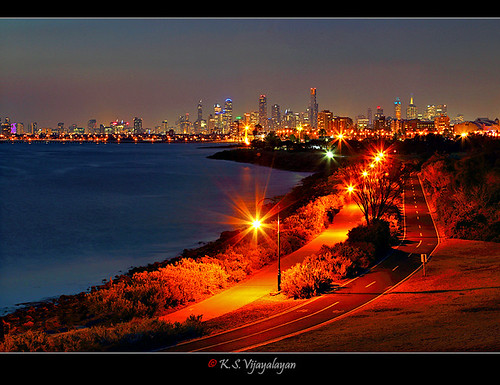The "Star effect" is a stunning phenomenon in nocturnal photography that can be captured by reducing the aperture size (ie, increasing f-number) of a camera's lens whenever there is light source small enough when compared with the whole view. As a rule of thumb, selecting f-number greater than or equal to f/18 (i.e., f/18, f/20, f/22) makes the bright light sources like street-lights, vehicle lights, etc appearing like stars. The number of blades that make up the iris (or aperture) of the lens dictates the number of points on a star-burst.
It has to be noted that shooting in the dark and small apertures results in very slow shutter speeds. Hence, a camera stabilizer, e.g., a tripod, is essential.
There are "Star effect" filters available with different numbers of points (Eg: 4, 6 or 8) to enforce star effect even at lower f-numbers for relatively higher shutter speeds. Even though star effect filters help to create star like appearance of street lights with cameras possibly hand-held, the 'artificial' effects tend to be artificial and less attractive.
It has to be noted that shooting in the dark and small apertures results in very slow shutter speeds. Hence, a camera stabilizer, e.g., a tripod, is essential.
View of Melbourne (F=22, Exposure time=30 sec, ISO=100)
There are "Star effect" filters available with different numbers of points (Eg: 4, 6 or 8) to enforce star effect even at lower f-numbers for relatively higher shutter speeds. Even though star effect filters help to create star like appearance of street lights with cameras possibly hand-held, the 'artificial' effects tend to be artificial and less attractive.




No comments:
Post a Comment